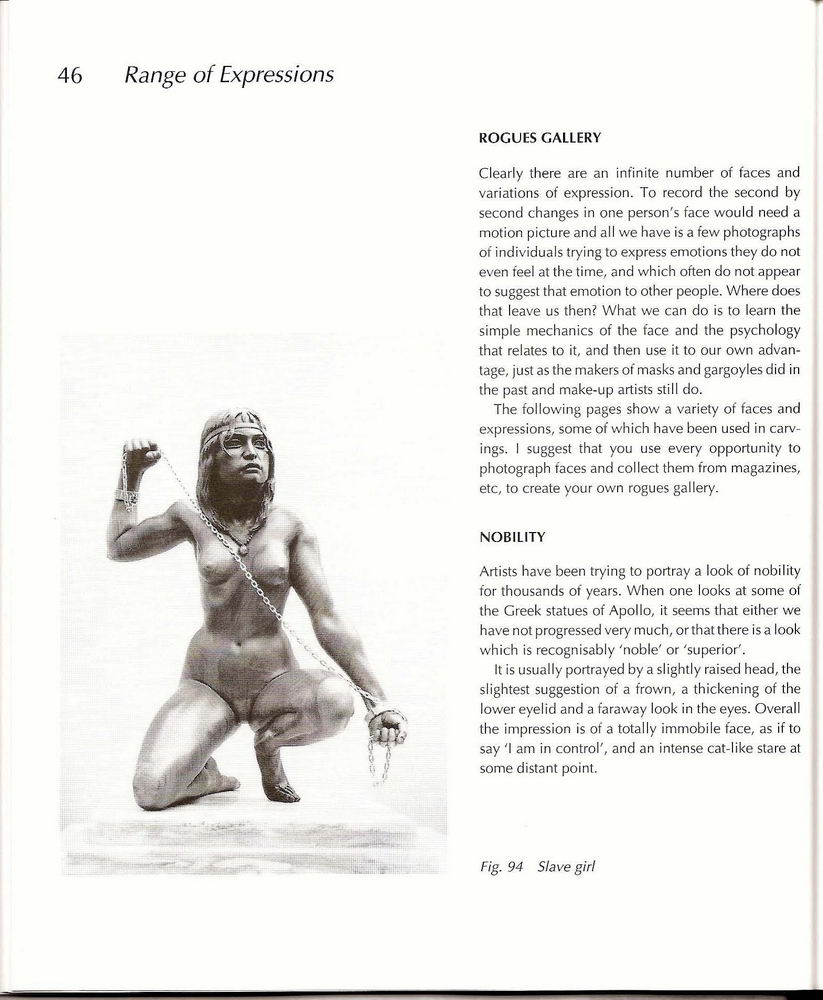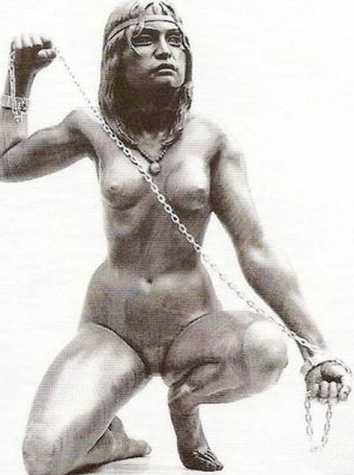carvingúceF

46 RangÄ™ of Expressions

ROGUES GALLERY
Clearly there are an infinite number of faces and variations of expression. To record the second by second changes in one person's face would need a motion picture and all we have is a few photographs of individuals trying to express emotions they do not even feel at the time, and which often do not appear to suggest that emotion to other people. Where does that leave us then? What we can do is to learn the simple mechanics of the face and the psychology that relates to it, and then use it to our own advan-tage, just as the makers of masks and gargoyles did in the past and make-up artists still do.
The fol Å‚owi ng pages show a variety of faces and expressions, some of which have been used in carv-ings. I suggest that you use every opportunity to photograph faces and collect them from magazines, etc, to create your own rogues gallery.
NOBILITY
Artists have been trying to portray a look of nobility for thousands of years. When one looks at some of the Greek statues of Apollo, it seems that either we have not progressed very much, or that there is a look which is recognisably 'noble' or 'superior'.
It is usually portrayed by a slightly raised head, the slightest suggestion of a frown, a thickening of the lower eyelid and a faraway look in the eyes. Overall the impression is of a totally immobile face, as if to say 'I am in control', and an intense cat-like stare at some distant point.
Fig. 94 Slave girl
Wyszukiwarka
Podobne podstrony:
carving?ce2 32 RangÄ™ of Expressions These studies show a grinning face carved in wal-nut, Fig. 65, a
carving?ce8 38 RangÄ™ of Expressions In the carving, Fig. 79, al-though the top half ot the face is c
carving?ceE 45 RangÄ™ of Expressions
carving?ceH 48 RangÄ™ of Expressions The Masai warrior Fig. 96 and Ozymandias, the Egyptian king, Fig
carving?ceT 54 RangÄ™ of Expressions
carving?ce4 34 RangÄ™ of Expressions In the tace of Falstaff, Fig. 70, these reactions are the only s
carving?ce@ 40 Rangę of Expressions Fig. 82 (Dęta i I from Mariili on) Fig. 84 shows a variety of an
carving?ceB 42 RangÄ™ of Expressions FNVY Figs 85, 86, 87 and 88 are my rather theatrical ideas of en
carving?ceD 44 RangÄ™ of Expressions FEAR Fear is caused by many different stimuli from the fear of l
carving?ce` 60 RangÄ™ of Expressions
więcej podobnych podstron